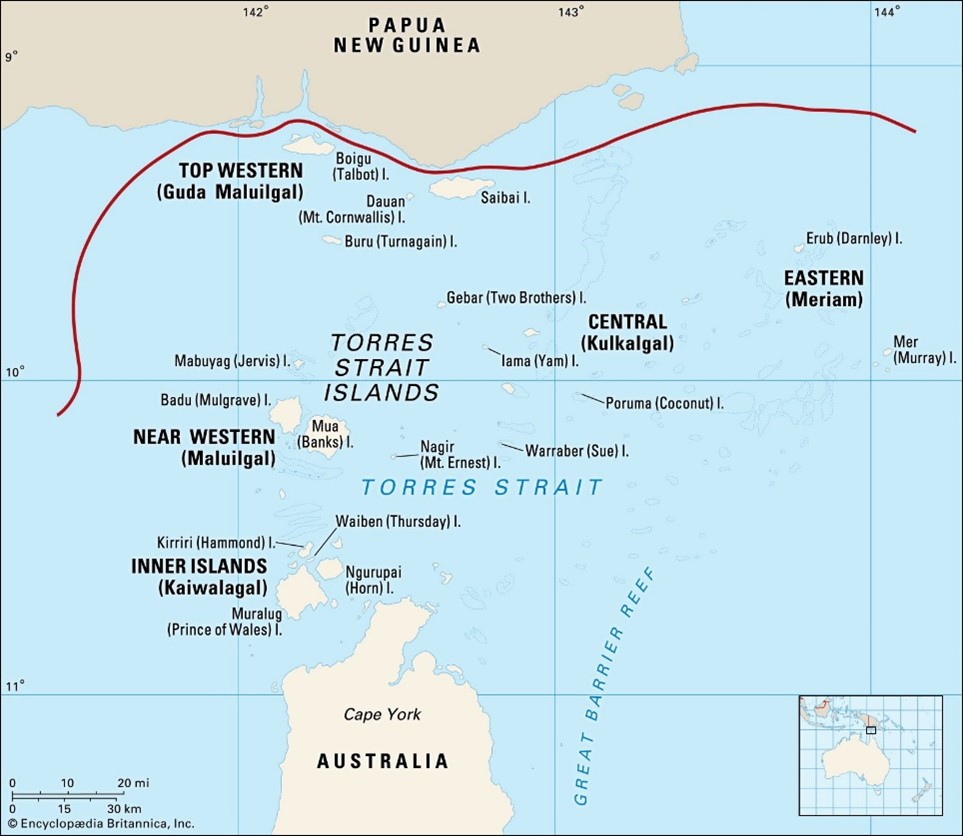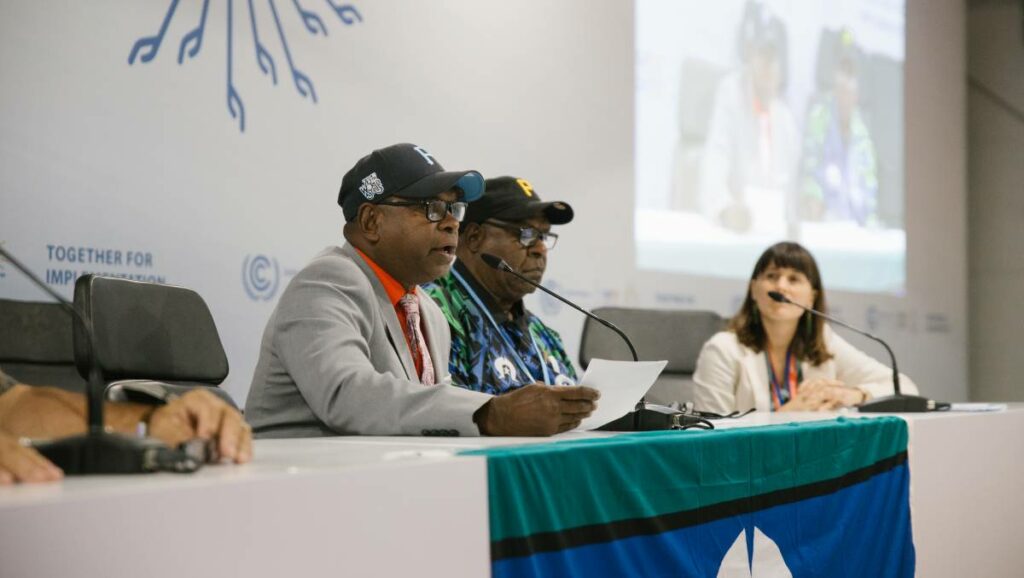
Brad Pillans, Director, National Rock Garden
Published in the National Rock Garden Newsletter No. 24, December 2022
Some time ago, NRG Advisory Council member, Professor Tom Calma, suggested that we obtain a rock from the Torres Strait Islands (also known as Zenadth Kes), to celebrate the land bridge that once connected Australia and New Guinea and across which some of the first Australians would have walked. [The strait is named after the Spanish navigator, Luis Vaz de Torres, who was the first recorded European navigator to sail through, in 1606.]
While the exact route that the first Australians took to reach Australia from Southeast Asia is debated, it certainly involved voyaging by boat, for at least part of the journey. Even at the height of the last glaciation, around 20,000 years ago, when sea level was more than 120 metres lower than present, there was not a continuous land bridge from Asia to Australia. Yes, Australia and New Guinea were joined, but many of the Indonesian islands remained as islands separated by deep water with strong ocean currents. By comparison, Torres Strait is very shallow and would become dry land if sea level was only some 10 m lower than present, which means that it was one of the last parts of Australia’s continental shelf to be flooded after post-glacial sea-level rise reached its present level around 7,000 years ago.

As documented by Nunn & Reid (2016), there are stories belonging to Aboriginal groups from all around the Australian coast, of a time when the former coastline of mainland Australia was inundated by rising sea level. According to Nunn and Reid, it is entirely plausible to conclude that these stories refer to events that occurred more than 7,000 years ago. Such stories imply an extraordinary longevity of Aboriginal oral traditions (more than 300 generations), which can be celebrated in the National Rock Garden.
Rising sea-levels, associated with anthropogenic global warming, are now impacting low-lying islands in Torres Strait and many other Pacific islands. In November, two Traditional Custodians, Uncle Pabai Pabai and Uncle Paul Kabai, from the islands of Boigu and Saibai, respectively, travelled to Egypt to attend the COP27 meeting, with a simple message to world leaders—reduce greenhouse gas emissions or we will lose our islands and become Australia’s first climate change refugees (Canberra Times, 25 Nov 2022). Low-lying islands, such as Boigu and Saibai, are being flooded during storms and king tides, damaging homes and inundating gardens with saltwater. As a result, traditional food crops such as taro are being destroyed. Freshwater swamps are also being inundated, resulting in loss of habitat for barramundi and mud crabs, while seagrass breeding grounds for dugong and turtle are being covered in sand.
In pre-European times, Torres Strait was envisaged to be a boundary between horticulturalists in New Guinea and hunter-gatherers in Australia, but that dichotomy is increasingly challenged (e.g., Pascoe 2018). Recent work by Robert Williams has documented terraced gardens for banana cultivation on Mabuyag Island around 1300 years ago, so there is clearly a long history of horticulture in Torres Strait, with likely diffusion of cultivation practices and cultivars from New Guinea (Williams et al 2020). Robert was a member of the NRG Steering Committee, several years ago, and is a Ngambri-Ngunnawal Traditional Custodian from the Canberra area. How very appropriate it would be for the NRG to display a rock from Torres Strait, to celebrate Torres Strait islander culture and heritage.

References
Canberra Times, 25 November 2022. https://www.canberratimes.com.au/story/7993847/unless-there-is-action-torres-strait-islanders-will-be-climate-change-refugees/. Last accessed 22 December 2022.
Nunn, P.D., Reid, N.J., 2016. Aboriginal memories of inundation of the Australian coast dating from more than 7000 years ago. Australian Geographer, 47(1): 11-47. https://doi.org/10.1080/00049182.2015.1077539
Pascoe, B., 2018. Dark Emu. Magabala Books, Broome, 277 pp. https://www.magabala.com/products/dark-emu
Williams, R.N., Wright, D., Crowther, A., Denham, T., 2020. Multidisciplinary evidence for early banana (Musa cvs.) cultivation on Mabuyag Island, Torres Strait. Nature Ecology & Evolution, 4: 1342–1350. https://doi.org/10.1038/s41559-020-1278-3


